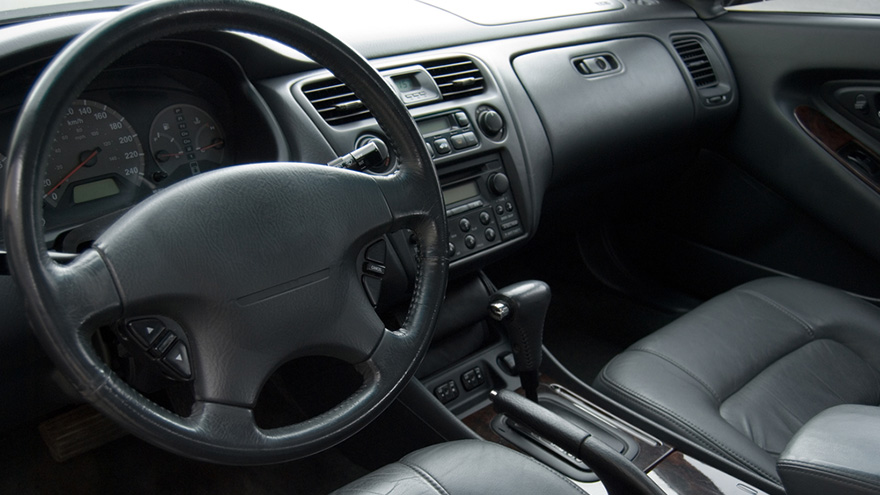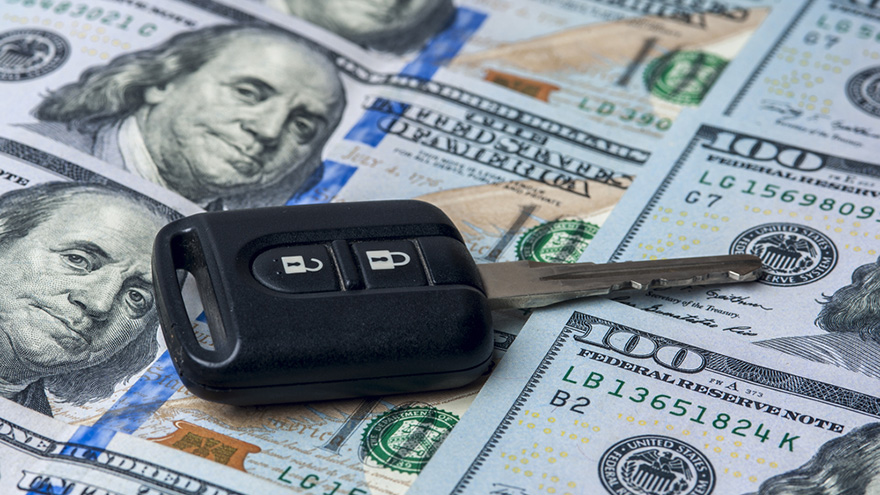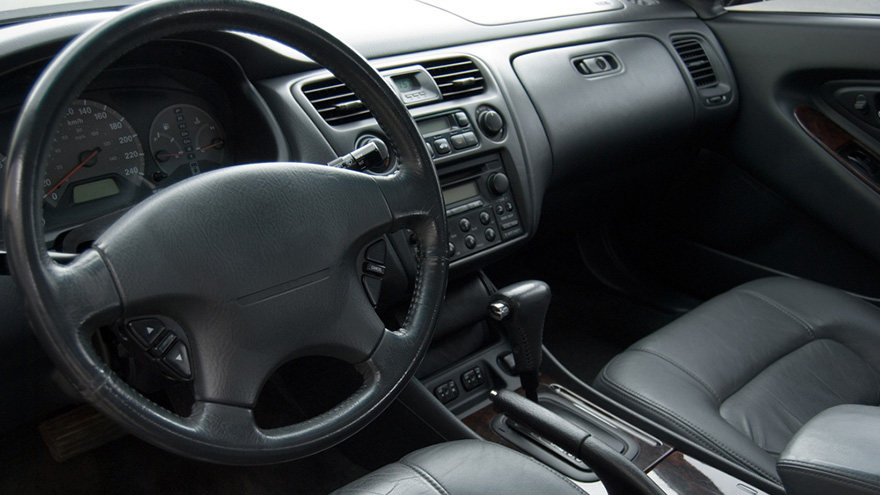The first rendition of the Black Book Used Vehicle Retention Index for 2018 showed the wholesale market is heading into traditional cyclical pattern going into the spring.
On Monday, Black Book released the January index, which registered in at 113.1, marking a dip of 0.9 percent from the previous month. The December reading came in at 114.1.
Editors pointed out that the Index has now softened by 1.2 percent during the past 12 months.
The Black Book Used Vehicle Retention Index is calculated using Black Book’s published wholesale average value on 2- to 6-year-old used vehicles, as percent of original typically-equipped MSRP. It is weighted based on registration volume and adjusted for seasonality, vehicle age, mileage and condition.
Entering February, Black Book noted the market appears to be reaching typical depreciation levels following a few months of post-hurricane activity in the third and fourth quarters.
According to Black Book, overall the market is experiencing a 1-point decline, fairly uniform across roughly all segments, with near luxury cars pacing the biggest decliners at 1.8 percent and luxury cars close by at 1.6 percent.
“As we ended last year on a strong note with used vehicle values getting a lift due to hurricane replacement activity, we expected we a larger decline in January,” said Anil Goyal, Black Book’s executive vice president of operations, in the analysis.
“We anticipate stability in the Index values over the next couple of months as the spring selling season gets underway, and consumers shop with an appetite driven by the recent tax changes approved,” Goyal continued.
The index dates back to January 2005, where Black Book published a benchmark index value of 100.0 for the market. During 2008, the index dropped by 14.1 percent while during 2016, the index fell by just 6.4 percent.
During 2011, the index rose strongly from 113.3 to 123.0 by the end of the year as the economy picked up steam and used vehicle values rose higher. It continued to remain relatively stable, rising slightly until May 2014 when it hit a peak of 128.1.
To obtain a copy of the latest Black Book Used Vehicle Retention Index, go to this website.
As veteran used-car managers and wholesale price watchers understand, oftentimes luxury units take quite a price tumble during the time the vehicle leaves the factory to when it might end up in a store’s used inventory. It all stems from that critical first year of depreciation.
The team at iSeeCars.com generated some fresh data to reinforce this believe by analyzing more than 6 million new and used models sold from Aug. 1 through Jan. 24, comparing the retail prices.
In the used-vehicle part of the study, iSeeCars.com found eight models had a price difference of at least 30 percent compared to the new-car price. As mentioned, most of these units are luxury sedans, according to the project available here.
“While the peace-of-mind associated with a new car may be worth a few thousand dollars to a consumer, it may not be worth tens of thousands of dollars, as is the case with these cars,” iSeeCars.com chief executive officer Phong Ly said in a news release.
Luxury vehicles dominate this list, with sedans by Cadillac, Mercedes-Benz, Lincoln and INFINITI. The top vehicle on the list, the Cadillac XTS, costs more than $20,000 less when bought used.
“Many luxury cars are leased by individuals or companies for fleet or management use and replaced with newer models, and this turnaround increases the number of used cars in the marketplace, causing a larger drop in price,” Ly said.
The non-luxury cars on the list are the Jeep Compass, Toyota Camry, and Kia Sedona.
“Although Jeeps tend to hold their value well, the Compass received widespread criticism for its performance and its lack of off-roading capabilities characteristic of the Jeep brand, which could partly explain why they’re cheaper to buy lightly used,” Ly said.
“Sales of the Compass and the Sedona were also higher in the last couple of years, so if consumers are dissatisfied with these cars, there may be a larger supply of them on the used car market, driving down used prices,” Ly continued.
“The Camry’s inclusion on this list can be attributed to the 2018 redesign, which updated the powertrain, improved the handling, and added new exterior styling, on top of new safety features. The improvements come at a premium, so when compared with new models one-year-old Camrys are much cheaper,” Ly went on to say.
Top Cars to Buy Used Over New
Rank
(By Percentage) |
Model |
Percentage Difference
Used Over New |
Dollar Difference
Used Over New |
| 1 |
Cadillac XTS |
-38.7% |
-$20,965 |
| 2 |
Jeep Compass |
-34.8% |
-$9,652 |
| 3 |
Mercedes-Benz E-Class |
-34.5% |
-$22,919 |
| 4 |
Lincoln MKZ |
-33.7% |
-$14,328 |
| 5 |
Cadillac CTS |
-33.4% |
-$18,170 |
| 6 |
INFINITI Q50 |
-32.2% |
-$14,654 |
| 7 |
Toyota Camry |
-30.7% |
-$8,213 |
| 8 |
Kia Sedona |
-30.0% |
-$9,682 |
| |
Overall Average |
-21.1% |
-$7,654 |
On the new-car side, the latest study by iSeeCars.com found a few models can be purchased new for as little as $2,885 over the price of the previous year’s lightly-used version.
Site analysts identified nine new models that cost up to just 15 percent more than the gently-used version. When compared with the overall average of 26.8 percent, iSeeCars.com thinks these vehicles may provide better value when purchased new.
“It’s widely understood that new cars tend to lose a large portion of their value shortly after they’re driven off the lot, but these cars retain more of their value over the first year,” Ly said. “Instead of buying a car that’s been driven for one year, consumers can buy the new version for just a few thousand dollars more and take advantage of the latest and greatest technological and safety features.
“When spread out over the length of a car loan at an average of 5.5 years, the slightly increased monthly payments can be offset by the added warranty and dealer incentives,” he continued.
The nine models that have the smallest changes in price are popular models and are almost exclusively pickup trucks and SUVs. The notable exception is the Subaru WRX sports car.
“The WRX is a high-demand vehicle and it had a starring role in the 2017 box office hit ‘Baby Driver’, adding to its appeal,” Ly said.
The top spot went to the Jeep Wrangler Unlimited, while a second Jeep model, the Renegade placed eighth on the list.
“Jeeps are known for retaining their value due to their durability and performance across all terrains,” Ly said. “Strong brand reputation is another key factor to aid in value retention, so it is no surprise that Toyota and Honda each have multiple vehicles on the list.”
Top Cars to Buy New Over Used
Rank
(By Percentage) |
Model |
Percentage Difference New Over Used |
Dollar Difference New Over Used |
| 1 |
Jeep Wrangler Unlimited |
8.9% |
$3,199 |
| 2 |
Toyota Tacoma |
10.4% |
$3,320 |
| 3 |
Toyota 4Runner |
12.7% |
$4,605 |
| 4 |
Nissan Frontier |
13.3% |
$3,180 |
| 5 |
Honda Pilot |
13.7% |
$4,858 |
| 6 |
Chevrolet Colorado |
13.7% |
$4,154 |
| 7 |
Honda HR-V |
13.8% |
$2,885 |
| 8 |
Jeep Renegade |
14.1% |
$2,897 |
| 9 |
Subaru WRX |
14.2% |
$4,115 |
| |
Overall Average |
26.8% |
$7,654 |
In summation, Ly asserted that the data from iSeeCars.com reinforces what dealers might already be seeing in their showroom or at the auction.
“This list reflects the current marketplace as demand for SUVs and pickup trucks are at record highs while demand for passenger cars is steadily declining,” Ly said. “The rising popularity of these car types could be attributed to steady gas prices.
“Whether consumers buy a brand new car or a lightly-used version of the same model depends on how much the new technology, complete lack of wear-and-tear, and the new car smell are worth to them,” Ly continued.
“For some models, these features cost only a few thousand more, while for others they cost tens of thousands more. Consumers should keep these comparisons in mind as they decide whether to buy new or buy used,” he concluded.
Changing consumer behavior is forcing wholesale market experts to modify how they track pricing shifts.
While recapping what happened in December, J.D. Power Valuation Services shared its latest wholesale price expectations for 2018, along with what analysts suspect will happen when the January data becomes available.
According to the latest installment of Guidelines, J.D. Power Valuation Services projected that January wholesale prices for vehicles up to 8 years in age will soften by 0.5 percent to 1 percent.
Despite the dip projected for the opening month of 2018, analysts suspect that their full-year price projections will stay “relatively flat” when compared to 2017 movements.
Last year closed with J.D. Power Valuation Services — formerly NADA Used Car Guide — seeing average wholesale prices dropping by 2.3 percent. The movement left J.D. Power Valuation Services’ Seasonally Adjusted Used Vehicle Price Index at 114.8, marking a drop of 0.9 percent.
For all of 2017, the index fell 3 percent year-over-year, according to the report, which also shared the modifications J.D. Power Valuation Services made to its evaluations.
“Compared to earlier time periods, the last few years has shown a significant divergence in price behaviors between cars and light trucks,” analysts said in Guidelines.
“Trucks (CUVs, SUVs and pickups) exhibit different depreciation behaviors and different seasonal price variations, and the magnitude of these differences have grown over time,” they continued. “Because of this, we have separated the portion of the index calculation that account for depreciation and seasonal price variations into a calibration for cars and a calibration for trucks.
This allow for a more accurate accounting of these factors, which in turn allows for a more accurate accounting of the actual movement in prices outside of these factors,” analysts went on to say.
The modifications to the reporting touched on another aspect, too.
“In addition, a careful reassessment was made of the appropriate seasonal price variation assumptions in light of the reduction in observed seasonal peaks and troughs of the last two calendar years,” analysts said.
“The primary result of this assessment as it concerns recent price movements, is a reduction in the size of price movements in the seasonally adjusted series for the spring and fall of 2017,” they added.
After the explanations, J.D. Power Valuation Services turned back to its December data.
Analysts found the last month of 2017 produced losses at the level larger on average than historic norms.
Luxury utility prices fell by a “significant” 4.2 percent — a level 3 percentage points higher than what analysts spotted during the past five years. The trend was especially noticeable for model years 2014 through 2017.
A specific vehicle example J.D. Power Valuation Services mentioned was the Mercedes-Benz GL. As auction volume for these units rose 8 percent, prices dropped by 5 percent.
Analysts also noted that compact luxury utilities softened by a healthy figure in December, as well, sliding by 4.1 percent.
The two other luxury segments J.D. Power Valuation Services watches dropped by similar rates. Luxury midsize utilities dipped by 3 percent, and luxury midsize cars were off by 3.4 percent.
Over on the mainstream side of the market, the report showed large utilities paced the December decliners, dropping by 4.2 percent as large full-size units from General Motors took the brunt of that decrease. For example, analysts mentioned the 2014 Chevrolet Suburban fell by 8 percent, while the 2014 GMC Yukon XL decreased by 7 percent.
Analysts also spotted a 3.4-percent price decline for subcompact cars in December; a reading 2.4 percentage points higher than what they typically saw in the closing month of a year going back to 2012.
J.D. Power Valuation Services closed by pointing out that large pickups continue to “outperform the market” since prices for these units dipped by just 1.6 percent in December.
Black Book’s latest wholesale price data and anecdotes from the lanes offered vivid details about what’s happening when clean trucks and SUVs roll over the block.
This week’s Black Book Market Insights report also indicated overall values are holding up well as the industry approaches the spring selling season.
“Lower mileage trucks and SUVs continue to be in demand. We are seeing consignors holding out for more money on their units to drive up prices," said Anil Goyal, senior vice president of automotive valuation and analytics at Black Book.
Black Book’s volume-weighted data showed overall car segment values decreased by 0.58 percent last week, better than the average weekly decrease of 0.69 percent in values over the previous four weeks.
Editors determined the midsize car segment performed the best, decreasing the least in value; just $10 or 0.13 percent. Meanwhile on the opposite end of the spectrum, they spotted sizeable declines for luxury cars ($163 or 0.93 percent), prestige luxury cars ($172 or 0.54 percent) and premium sporty cars ($247 or 0.63 percent).
Turning next to volume-weighted truck data, Black Book reported that overall truck segment values — including pickups, SUVs, and vans — decreased by 0.46 percent last week, slightly better than the average weekly decrease of 0.52 percent in values noticed during the previous four weeks.
Editors found that compact van segment performed the worst, decreasing the most in value among all the truck segments at $152 or 1.89 percent.
As Goyal references, the talk in the lanes is about how dealers are craning their necks at the sale if a gently used truck or SUV is being consigned.
Beginning in Massachusetts, Black Book’s observer said, “Overall the money was pretty good. Trucks, crossovers, and full-size SUVs all sold well.”
Over in Pennsylvania, the grip of winter is leaving a mark as the Black Book lane watcher shared, “New-car sales are still slow with the bad weather being a factor. Improving weather and a robust tax season will be welcome.”
In another cold-weather location — Michigan — sale activity seemed to be much warmer than the temperature outside as Black Book’s representative stated, “Michigan dealers are stocking up on inventory but out of state buyers are making a lot of the on-line purchases due to the high demand in their market.”
Sliding South to the Sunshine State, Black Book’s report out of Florida indicated, “Buyers at the auction are purchasing only what they need. They are mainly looking for trucks and SUVs with good miles."
Finally, like the price of fuel, the higher costs when the hammer fell in California took more out of dealers’ pockets and floor plan as Black Book noted, “Not enough quality vehicles available to meet the demand, so prices remain high.”
While more than a week remains in January, dealers might already be venturing into the wholesale market with spring on their minds, hoping retail sales increases bloom nicely.
What managers are going to have to pay for inventory varies based on the latest analysis from Black Book and RVI Group.
The December figures from RVI Group showed five vehicle segments generating year-over-year value upticks of at least 1.7 percent. Multiple segments were connected with units more popular when weather is more favorable. The rundown included:
—Sports car: up 2.3 percent
—Luxury small sedan: up 2.1 percent
—Full-size pickup: 1.9 percent
—Luxury full-size sedan: up 1.9 percent
—Sporty coupe: up 1.7 percent.
However, RVI Group also found that there were six vehicle segments that saw their values soften by at least 1 percent. Should these units turn in your market, RVI Group mentioned these segments as possibilities for lower acquisition costs for possible higher margins:
—Luxury coupe: down 4.2 percent
—Sub-compact: down 3.3 percent
—Small pickup: down 2.7 percent
—Small sedan: down 2.0 percent
—Full-size sedan: down 1.3 percent
—Compact: down 1.0 percent
Meanwhile the editorial team that compiled this week’s Black Book Market Insights report illustrated where cars saw larger-than-normal depreciation, especially with the spring selling season right around the corner.
The report also highlighted that within the 2015 model year segment retention, small pickups are holding 72.9 percent of their value; the strongest of any vehicle segment.
"The depreciation rate on car segments increased while strong sales volumes with more supply were reported at the auto auctions," said Anil Goyal, Black Book’s senior vice president of automotive valuation and analytics.
Volume-weighted, Black Book determined overall car segment values decreased by 0.76 percent last week, higher than the average weekly decrease of 0.60 percent in values editors noticed during the previous four weeks.
Editors added that the compact car, mid-size car and near luxury car segments decreased in value the most among all the car segments.
Again considering volume-weighted data, Black Book found that overall truck segment values — including pickups, SUVs and vans softened by 0.48 percent last week, better than the average weekly decrease of 0.57 percent in values editors tallied during the previous four weeks.
Editors also mentioned sub-compact crossover, minivan and mid-size crossover/SUV segments decreased in value the most among all the truck segments.
Closing this report with what Black Book’s representatives gathering in the lanes, dealers seem to be somewhat upbeat as 2018 moves along.
Beginning in California, Black Book’s lane watcher mentioned, “Fairly strong sale today with good action in the auction arena as well as the online buying.”
In nearby Nevada, what’s happened on Capitol Hill is pushing dealers to make moves as Black Book found, “Dealers are optimistic that the new tax plan will stimulate many anxious buyers who have been on the sidelines for a while.”
Continuing to move East, Black Book’s representative in Colorado reported, “A pretty good sale here as the market is picking up after the holiday season. Attendance and sales were both up.”
Finally in Georgia, Black Book’s representative noticed, “A lot of vehicles were in good condition and sellers were dropping their floors in order to sell as many as possible. The in-lane attendance was up as well.”
While there likely are households and businesses still trying to recover from Hurricanes Harvey and Irma, KAR Auction Services chief economist Tom Kontos thinks the impact from those storms is no longer strongly influencing wholesale vehicle prices.
According to ADESA Analytical Services’ monthly analysis of wholesale used-vehicle prices by vehicle model class, wholesale used-vehicle prices in December averaged $10,804, which represented a 0.1 percent uptick compared to November and a 1.5-percent rise relative to December 2016.
However, Kontos pointed out that car prices were down both month-over-month and year-over-year, while the opposite was true for truck prices.
“With the impacts of Hurricanes Harvey and Irma having lasted primarily from late-August through mid-November, wholesale prices in December returned to patterns seen prior to those events,” Kontos said in his latest edition of the Kontos Kommentary.
“Namely, prices for cars continue to soften while prices for trucks were up,” he continued.
As he does now on a regular basis, Kontos took a closer look at 3-year old vehicles with 36,000 to 45,000 miles. For midsize cars, prices averaged $10,438 in December, marking a $299 softening year-over-year. For midsize SUV/CUVs, prices averaged $17,512 in December, edging $51 above the year-ago reading.
“Although midsize SUV/CUV prices were up in December in this analysis, the increase was modest compared to September through November,” Kontos said about those figures that came when holding constant for sale type, model-year age, mileage and model class segment.
“This may be indicative of a cessation in truck demand growth in Texas after Hurricane Harvey,” he added.
Looking back at the overall December data, Kontos mentioned average wholesale prices for used vehicles remarketed by manufacturers dropped 3.3 percent month-over-month but climbed 8.3 percent year-over-year.
He indicated prices for fleet/lease consignors were down 1.9 percent sequentially but up 0.4 percent annually.
Finally, Kontos said average prices for dealer consignors were down 0.1 percent versus November and up 3.6 percent relative to December 2016.
Kontos closed his regular update by mentioning some data from the National Automobile Dealers Association that indicated December retail used-vehicle sales by franchised and independent dealers were down a combined 3.4 percent year-over-year, after being down in October and November, as well.
ADESA Wholesale Used-Vehicle Price Trends
| |
Average |
Price |
($/Unit) |
Latest |
Month Versus |
| |
December 2017 |
November 2017 |
December 2016 |
Prior Month |
Prior Year |
| |
|
|
|
|
|
| Total All Vehicles |
$10,804 |
$10,797 |
$10,642 |
0.1% |
1.5% |
| |
|
|
|
|
|
| Total Cars |
$8,502 |
$8,546 |
$8,576 |
–0.5% |
-0.9% |
| Compact Car |
$6,452 |
$6,565 |
$6,413 |
-1.7% |
0.6% |
| Midsize Car |
$7,651 |
$7,794 |
$7,773 |
-1.8% |
-1.6% |
| Full-size Car |
$7,551 |
$7,190 |
$7,971 |
5.0% |
-5.3% |
| Luxury Car |
$12,959 |
$13,223 |
$13,049 |
-2.0% |
-0.7% |
| Sporty Car |
$13,846 |
$13,739 |
$12,748 |
0.8% |
8.6% |
| |
|
|
|
|
|
| Total Trucks |
$12,966 |
$12,950 |
$12,645 |
0.1% |
2.5% |
| Minivan |
$8,891 |
$8,554 |
$8,897 |
3.9% |
-0.1% |
| Full-size Van |
$12,619 |
$12,940 |
$11,317 |
-2.5% |
11.5% |
| Compact SUV/CUV |
$10,508 |
$10,599 |
$10,481 |
-0.9% |
0.3% |
| Midsize SUV/CUV |
$11,148 |
$11,133 |
$11,336 |
0.1% |
-1.7% |
| Full-size SUV/CUV |
$14,856 |
$14,208 |
$14,379 |
4.6% |
3.3% |
| Luxury SUV/CUV |
$18,711 |
$18,844 |
$18,141 |
-0.7% |
3.1% |
| Compact Pickup |
$9,209 |
$9,102 |
$8,757 |
1.2% |
5.2% |
| Full-size Pickup |
$16,189 |
$16,419 |
$15,624 |
-1.4% |
3.6% |
Source: ADESA Analytical Services.
Black Book determined full-year vehicle depreciation for 2017 didn’t quite reach the level editors saw for the previous year.
According to Black Book data, the average price of a used vehicle for model years 2012 through 2016 depreciated in value by 2.9 percent during the close month of 2017.
Editors indicated overall cars values dropped 3.0 percent and overall truck readings decreased 2.8 percent in value during December. That activity left all vehicles averaging a 12-month depreciation of 13.2 percent during 2017, compared to 17.3 percent in 2016, according to Black Book.
Two vehicle segments tied for the lowest depreciation during December. Editors found that both small pickups and full-size vans decreased in value by just 1.7 percent.
Vehicles in the small pickups segment include the Toyota Tacoma, Chevrolet Colorado, GMC Canyon, Nissan Frontier and the Honda Ridgeline. Black Book pointed out that units in this category started off the year with an average segment price of $21,262.
Vehicles in the full-size van segment include the Ford T150, Ram 1500 Promaster, GMC G1500, Chevrolet G1500, Nissan NV 1500 and the Mercedes Benz Sprinter Vans. Black Book added that full-size vans ended December with an average segment value of $17,311.
Black Book went on to mention sub-compact luxury CUVs saw the largest depreciation during December, falling by 4.8 percent. Vehicles in the sub-compact luxury CUV segment include Audi Q3, BMW X1, Mercedes Benz GLA Class and the Mini Cooper Countryman.
Vehicles in this segment finished December with an average price of $14,952, a 19.2-percent decline from year-earlier levels ($18,496).
Furthermore, Black Book added that prestige luxury cars saw the largest decrease in value from year-ago levels. This category dropped 23.4 percent since December of 2016 when the category had an average price of $41,452.
Vehicles in this group include the BMW 7-Series, Lexus LS 460, Porsche Panamera, Jaguar XJ, Mercedes Benz S-Class and the Audi A8. This vehicle group is currently priced at $31,745.
“Vehicle values ended the year with an easing of depreciation during the month of December,” said Anil Goyal, senior vice president of automotive valuation and analytics at Black Book.
“Between a stronger-than-expected spring selling season that lasted into early summer and the two hurricanes during the fall that required a healthy dose of vehicle replacement activity, we saw lower overall depreciation this year compared with 2016,” Goyal went on to say.
For dealers who are finding used subcompact crossovers in demand at their stores, the latest analysis from Black Book showed they didn’t have to dip quite as much into their floor-plan funds last week to acquire these units.
This week’s Black Book Market Insights report showed subcompact crossovers depreciating the most out of cars and trucks. Editors pinpointed the decline at 1.18 percent.
Looking at volume-weighted information, Black Book reported that overall car segment values decreased by 0.63 percent last week, similar to the average weekly decrease of 0.61 percent in values registered during the previous four weeks.
Editors noticed the full-size car, subcompact car and sporty car segments decreased in value the most among all the car segments.
Again considering volume-weighted data, Black Book determined overall truck values (including pickups, SUVs and vans) softened by 0.39 percent last week, better than the average weekly decrease of 0.63 percent in values spotted during the previous four weeks.
Along with those subcompact crossovers, editors noted that the full-size van and minivan segments decreased in value the most among all the truck segments.
“Cars continued to depreciate at a steady rate while most SUV segments did better in the second week of the year. Generally, activity was reported to be slow in the auto auctions,” said Anil Goyal, Black Book’s senior vice president of automotive valuation and analytics.
Reinforcing Goyal’s comments were the anecdotes collected by Black Book’s representatives in the lanes. The trend started with what the lane watcher in Arizona said, noting, “Auction consignment was low as was the quality of the vehicles there for sale.”
Like in Arizona, pleasant weather in Florida didn’t trigger a wave of dealer activity with Black Book’s watcher in the Sunshine State saying, “The demand has taken a dip here but, as is usually the case, the commercial lanes performed much better than the dealer lanes.”
Up in Massachusetts where winter is fully underway, sloppy conditions kept some dealers at their stores.
“There were fewer buyers in the lanes but the vehicles that sold brought pretty good money. Retail is still relatively slow in the Northeast where our weather has been a big issue,” said Black Book’s representative in Massachusetts.
The anecdotes closed with a report out of Tennessee that indicated: “Select buying is the trend and most of the vehicle interest is in the pickups and sport utilities.”
Along with a trio of perspectives from the auction and dealer worlds, the Black Book Market Insights report looking at the first full week of activity in 2018 showed truck segments with larger depreciation than cars.
Editors also determined only one vehicle group — subcompact luxury crossovers — maintained its value from the previous week. Black Book also noticed compact vans saw the heaviest depreciation, dropping in value by 1.70 percent.
“The first week of the year saw used-vehicle values continuing to decline at a pace not much different from the average weekly decline in the month of December,” said Anil Goyal, senior vice president of automotive valuation and analytics at Black Book.
Volume-weighted, editors reported that overall car segment values decreased by 0.57 percent last week, slightly improved from the average weekly decrease of 0.62 percent in values spotted during the previous four weeks.
Black Book indicated the luxury car segment decreased in value at the highest rate among all the car segments.
Again looking at volume-weighted data, editors found that overall truck segment values (including pickups, SUVs, and vans) decreased by 0.66 percent last week, slightly worse than the average weekly decrease of 0.62 percent in values reported during the previous four weeks.
The opening stanza of 2018 allowed Black Book’s representatives in the lanes to gather expectations from a wide array of industry professionals. The rundown began with an auction owner in South Carolina.
“Auto auctions can always use more cars and that supply need will continue in 2018,” the owner said. “The new tax plan should be a boost. The industry could use that surge since the ‘tax season’ has become shorter.”
Next, Black Book collected the thoughts from an executive at one of the auction chains.
“I believe the supply side of the auction business will grow due to more off-lease and repo units becoming available to remarketers. I also feel that the overall dynamics of the industry will be similar to 2017, which is good.”
Finally, Black Book relayed the outlook of a franchised dealer from Georgia.
“We feel like our new- and used-car business will improve in 2018 from a pretty darn good 2017. All of the economic indicators substantiate that theory and the recently passed tax laws should provide a boost both short- and long-term,” the dealer said.
While the past year showed stronger-than-expected retention rates overall, Black Book’s Used Vehicle Retention Index still fell 0.7 percent from 115.0 to 114.1 last month, following a rise in November.
In addition to the first decline in the last four months, this is also the lowest tally for December since 2010 when the Index was at 113.3. However, as the economy improved, the index rose back up to 123.0 in 2011, according to Black Book.
The Black Book Used Vehicle Retention Index is calculated using Black Book’s published wholesale average value on 2- to 6-year-old used vehicles, as a percent of original typically-equipped MSRP.
The index rose for four straight months, (August, September, October and November) before falling as a result of higher depreciation recorded for both car and truck segments, according to Black Book.
Black Book explained that last month, higher depreciation on vehicle segments was led by the full-size luxury CUV/SUV (-2.0 percent); mid-size luxury CUV/SUV (-1.9 percent); full-size car (-1.7 percent); compact crossover (-1.7 percent); and compact car segments (-1.4 percent).
“While December finished on a slightly down note for the Index, the overall year in 2017 was filled with stronger-than-expected retention rates, mainly due to a continuously health economy and vehicle replacement activity following the major hurricanes,” said Anil Goyal, senior vice president of automotive valuation and analytics for Black Book. “We expect to see depreciation rates return to normal levels in 2018, even though the recent tax changes may incentivize some additional spending, particularly during the spring tax season.”












